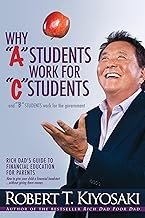Description
Understanding the Paradigm
Have you ever wondered why ‘A’ students often find themselves working under ‘C’ students, while ‘B’ students choose paths in government? This intriguing dynamic reveals the complexities of our educational system and career choices, offering insights into how different academic backgrounds influence professional trajectories.
Academic Excellence vs. Practical Skills
The traditional narrative suggests that ‘A’ students, who score high and excel in academic settings, should naturally ascend to the top of any professional hierarchy. However, reality often paints a different picture. Many ‘C’ students possess strong practical skills, emotional intelligence, and a knack for networking—traits that might not be fully reflected in their grades. As employers increasingly emphasize these skills, ‘C’ students often assume leadership roles, leaving ‘A’ students to work alongside them, leveraging the theoretical knowledge they’ve gained.
The Case for Government Careers
‘B’ students, landing right in the middle of the academic spectrum, often find their strengths in versatility and adaptability. These attributes make them excellent candidates for government roles, where policy-making and public service require a balance of analytical skills and practical solutions. Additionally, government jobs typically offer stability and a structured career path, attracting those who value a clear direction over the chaotic pace of private industry.
In summary, while academic excellence is undoubtedly valuable, it is not the sole factor determining professional success. The intersection of skills, opportunities, and career choices leads to a diverse workforce where ‘A’ students can thrive under the guidance of ‘C’ students, and ‘B’ students can carve their path in the public sector. Understanding these dynamics can empower students at all levels to appreciate their unique strengths and career possibilities, regardless of their academic label.











Reviews
There are no reviews yet.